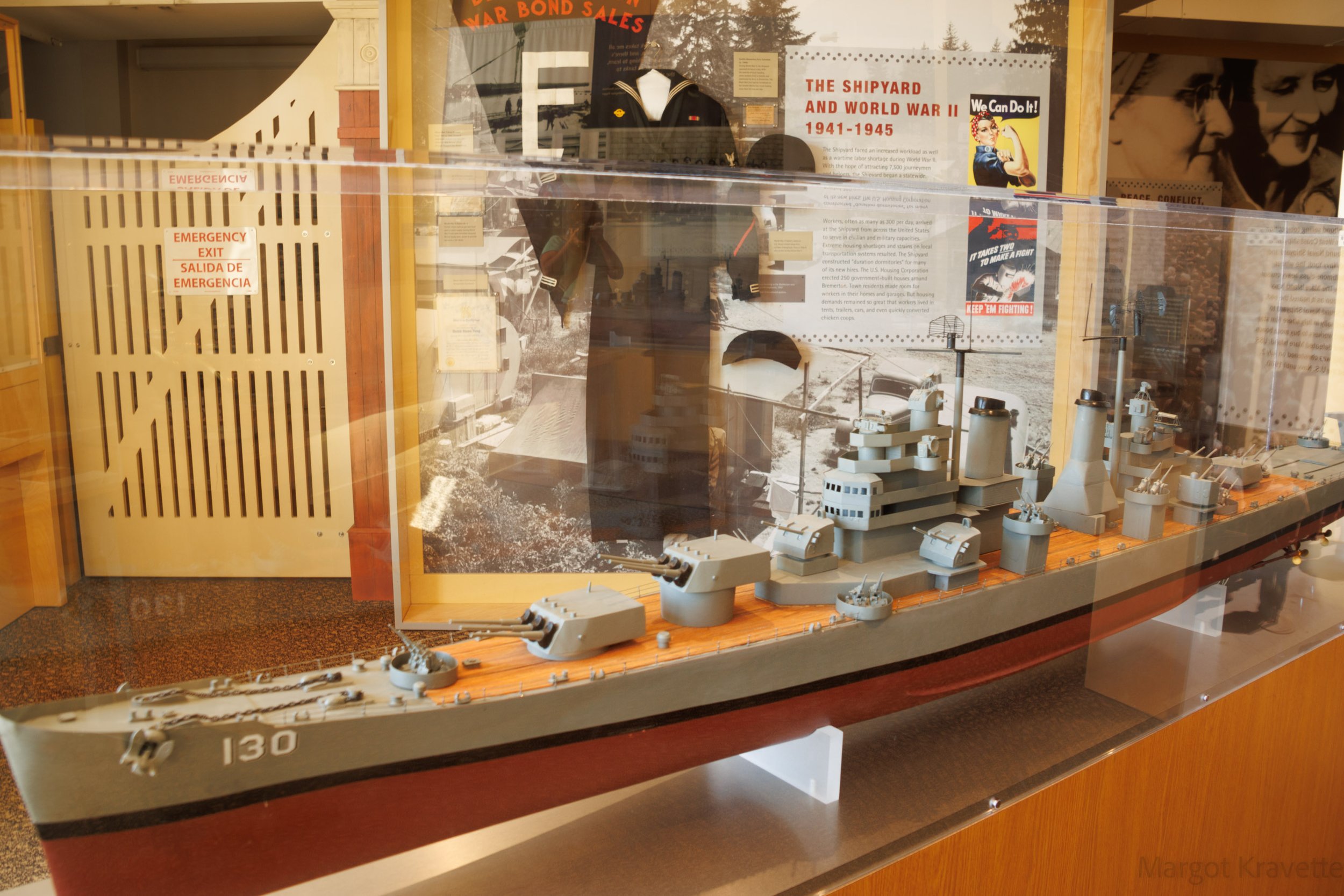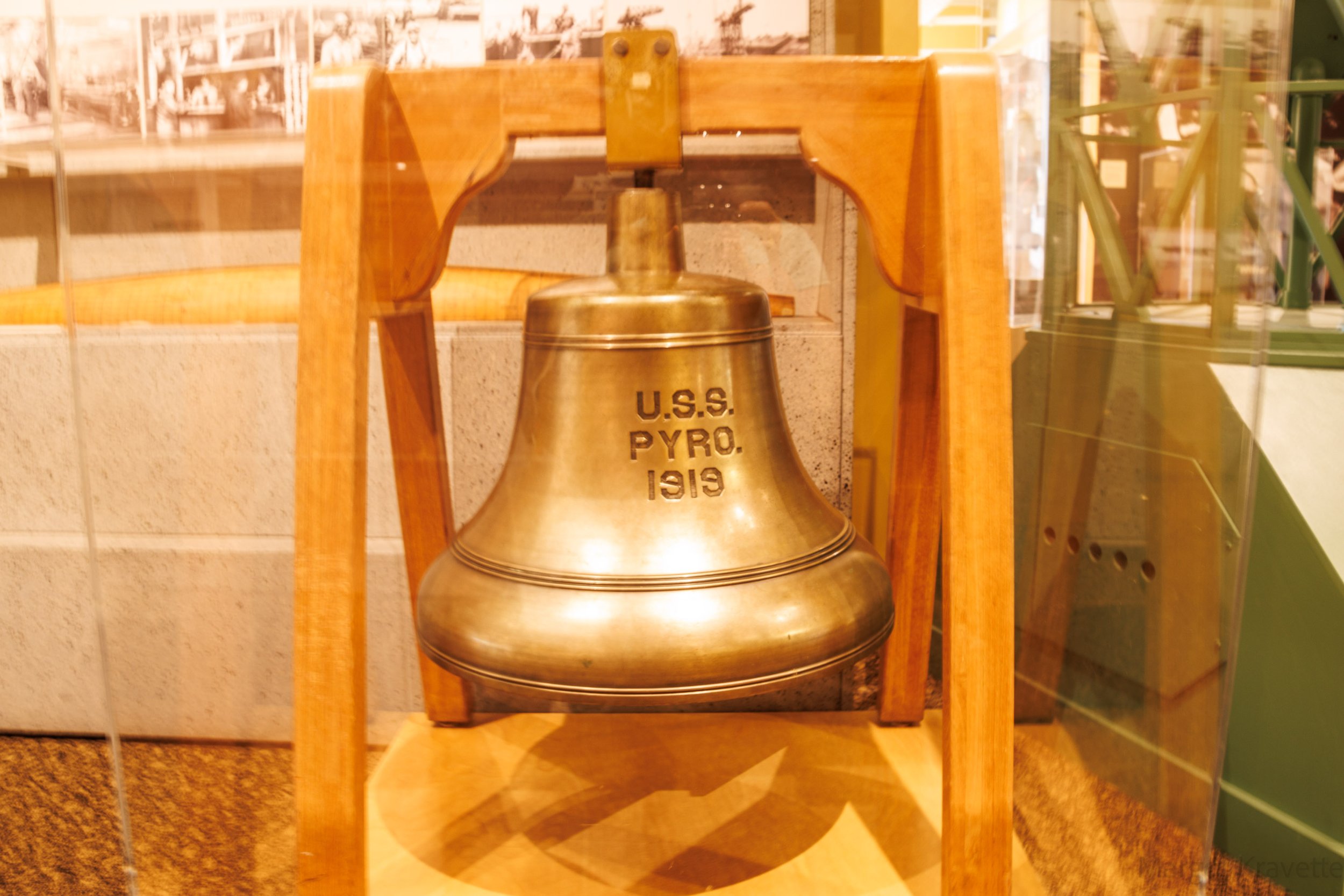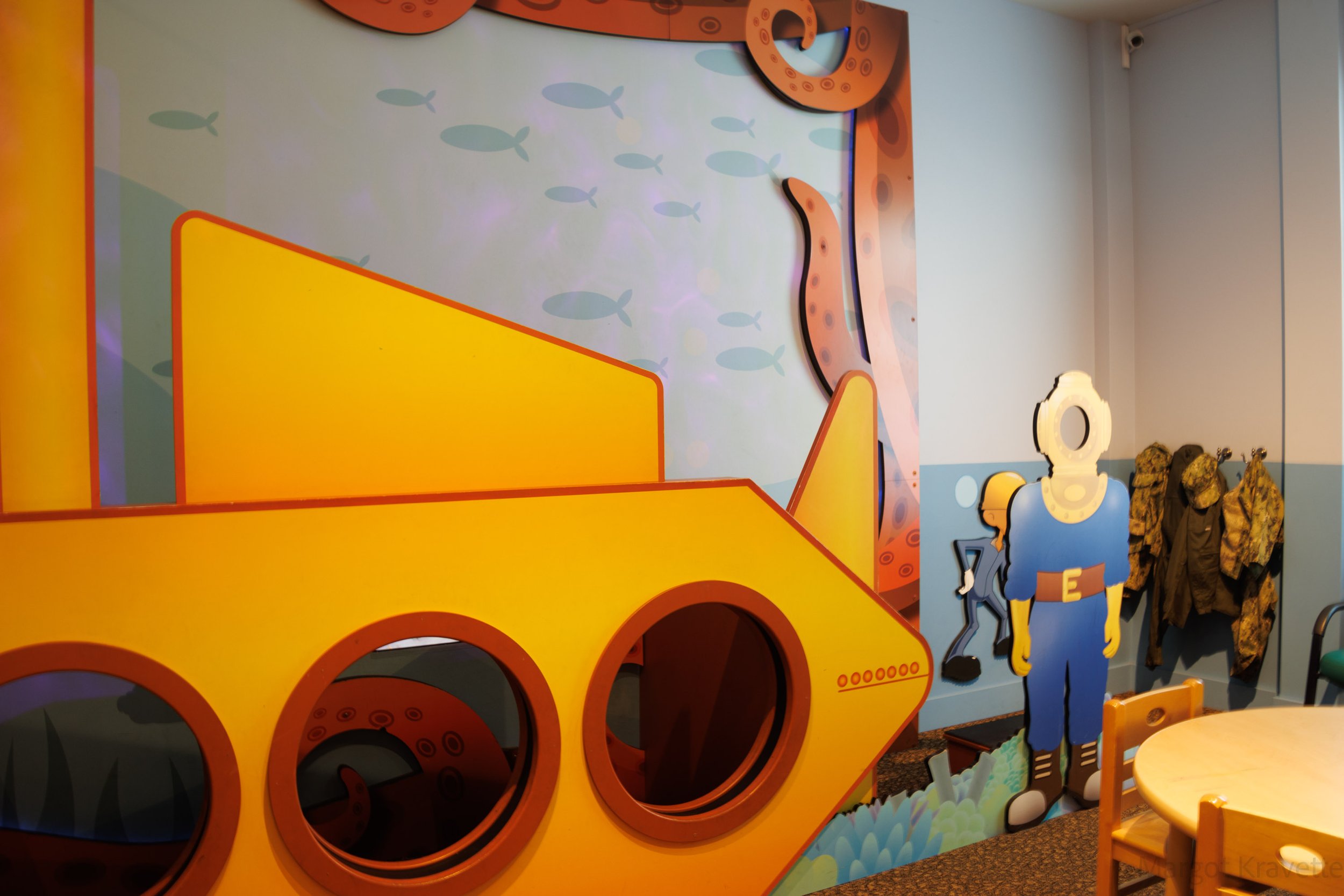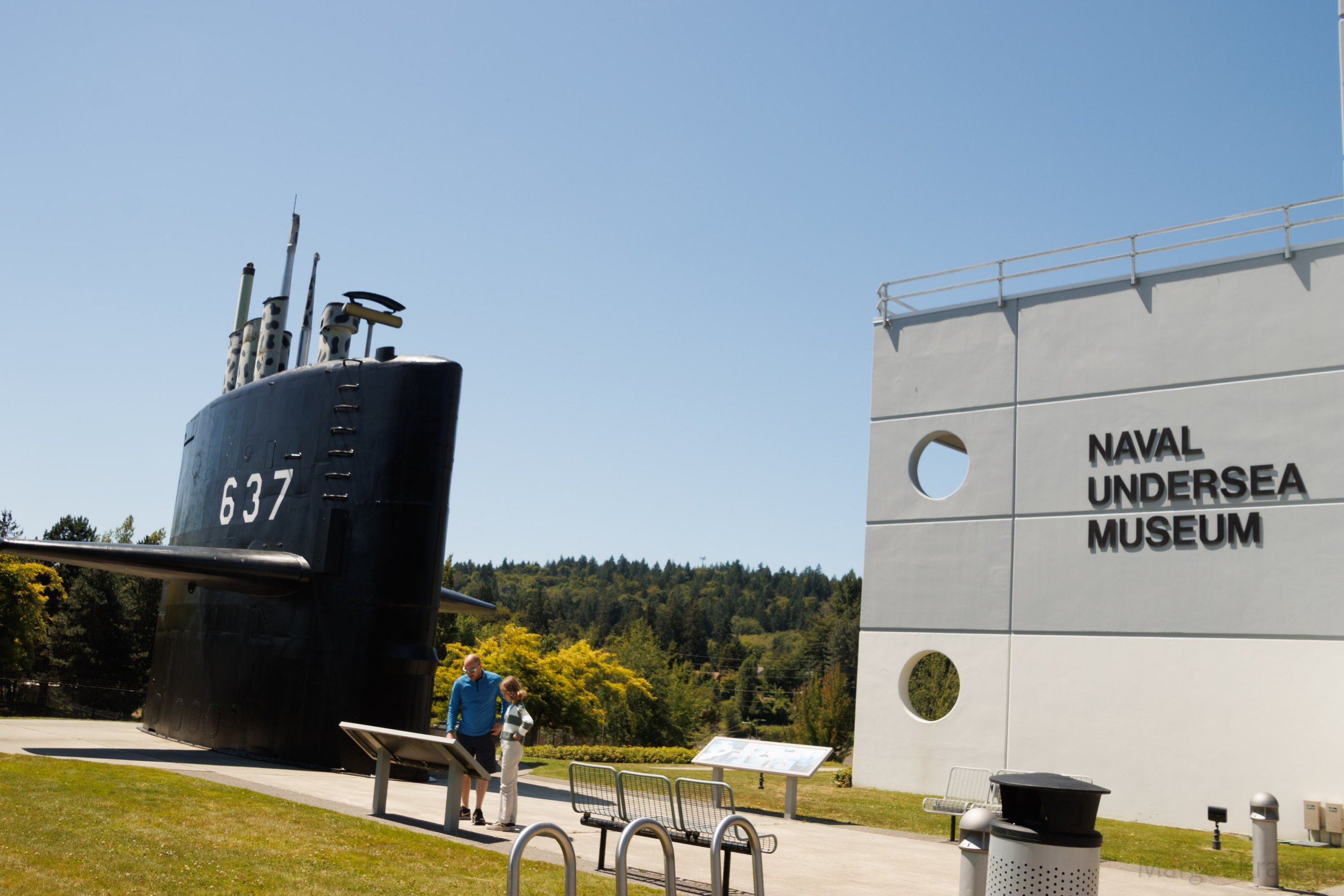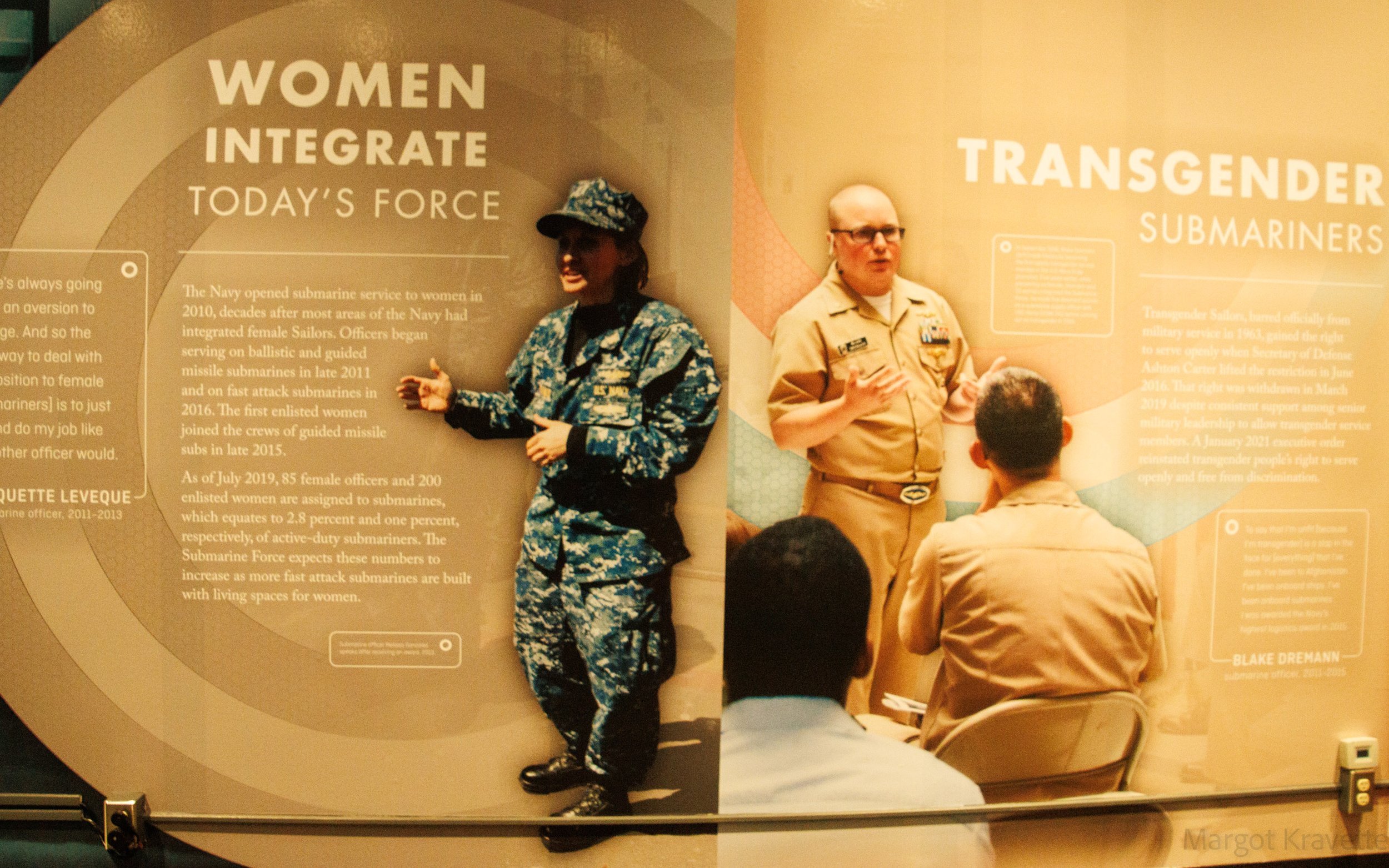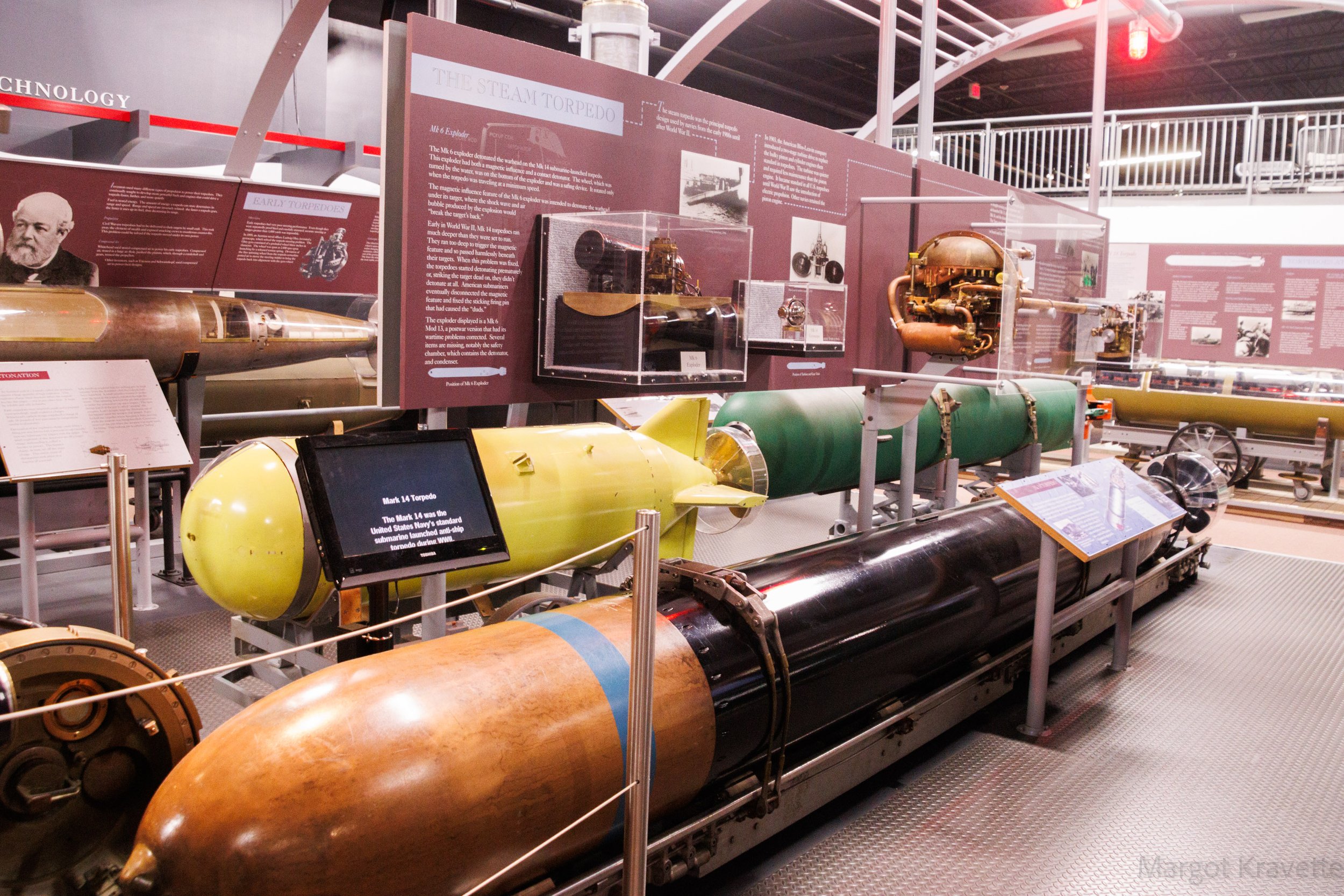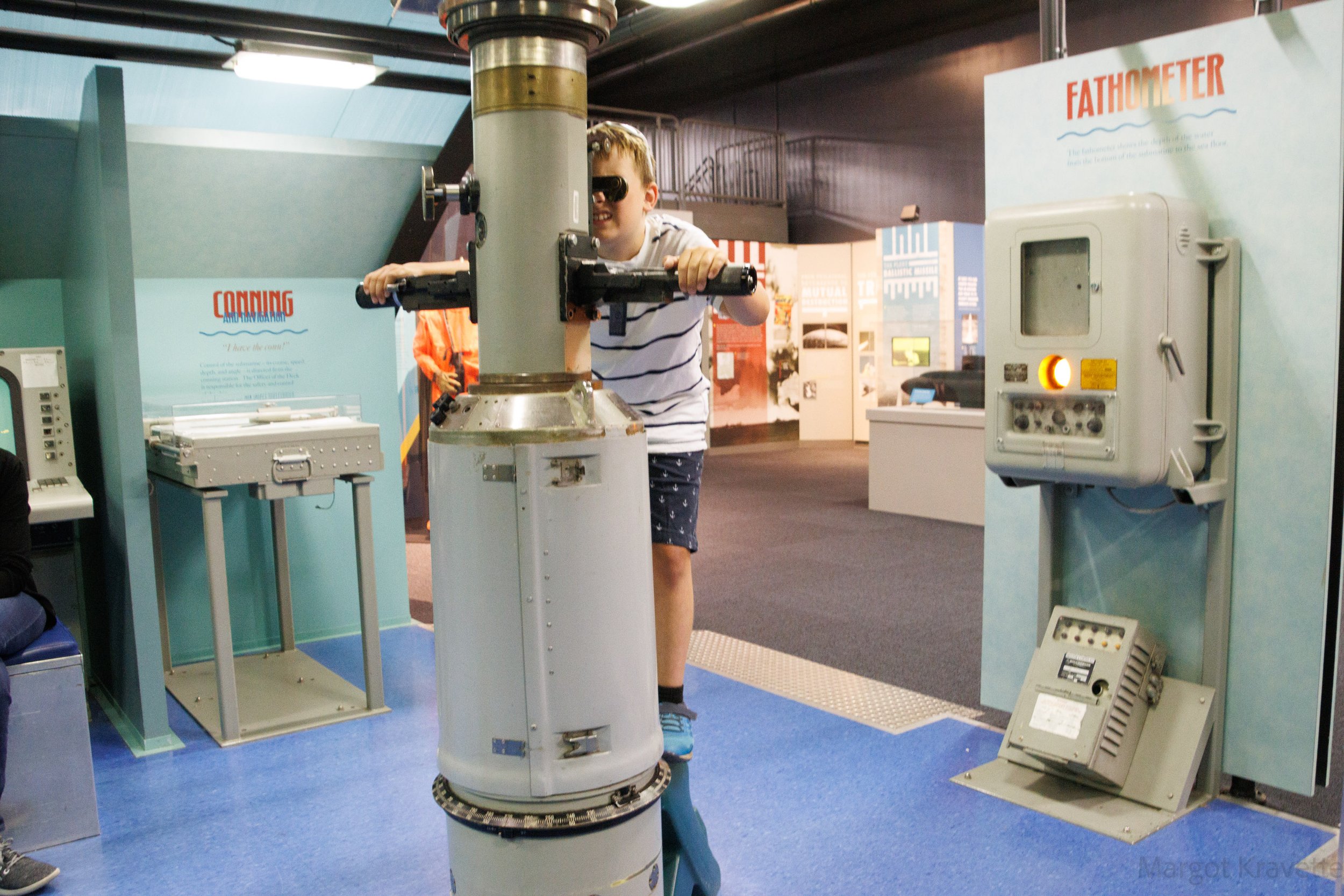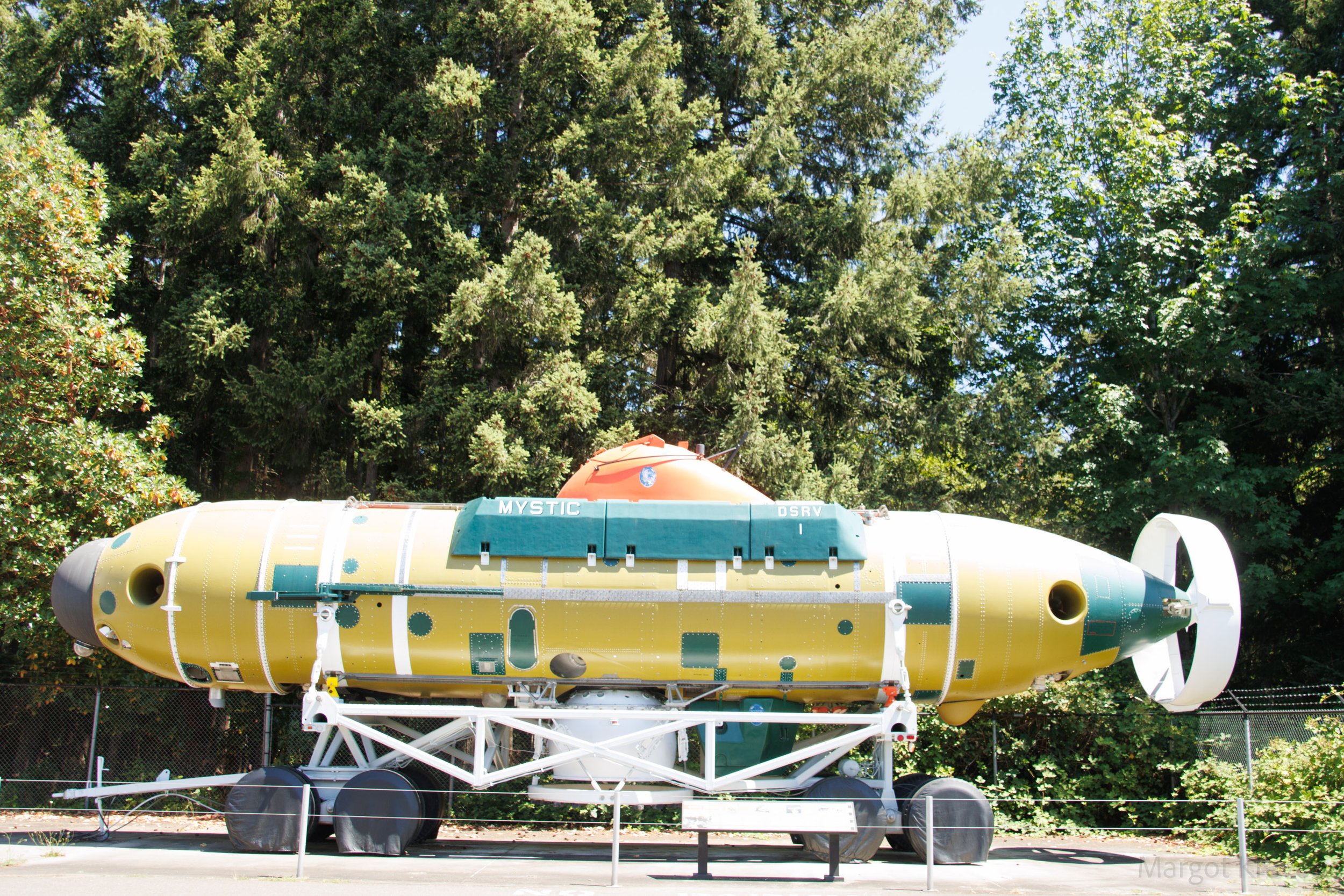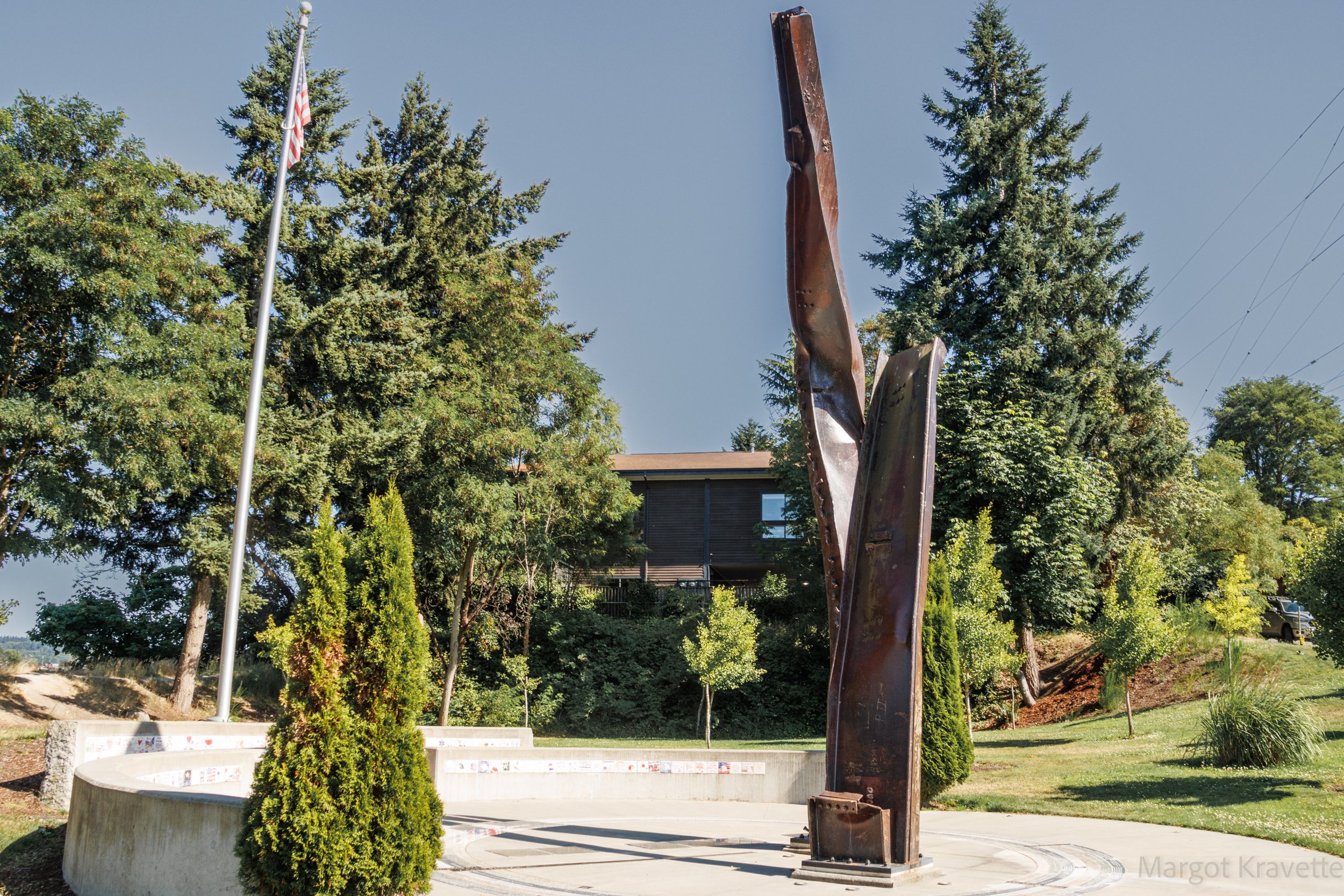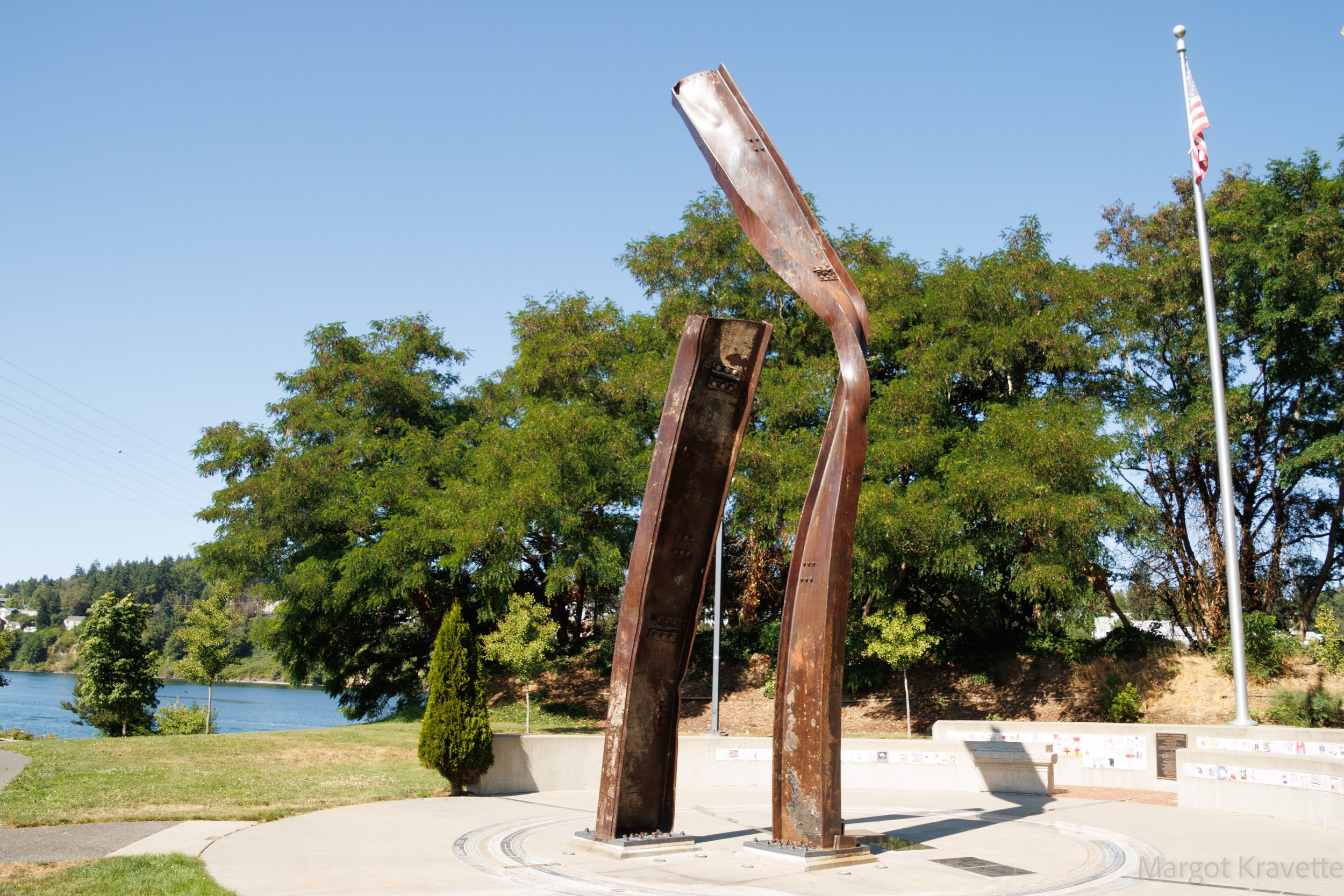US Navy Bremerton
My father was in the Navy. He was a Lieutenant Commander, stationed on a ship near New Zealand. I wish I knew the name of that ship and more about his experience. I remember that he brought home a Japanese flag that my mother donated to our school. I also remember how proud I was that he had contributed as an officer in World War II.
Bremerton is a true Navy town. Ships are built there, museums tell the stories, a big war ship is open to visitors, and statues and fountains in public spaces remind us how important the Navy is to this region. Its naval history began as far back as 1896 when the massive Bremerton dry dock was commissioned. Lieutenant Ambrose Wykoff had recommended a naval station in Bremerton with its beautiful harbor, mild climate, and easy access to coal and timber. It wasn’t until the 1990’s, however, that Bremerton was able to overcome the downtown’s reputation as a “blighted area” and begin its revitalization, beginning with the construction of the waterfront boardwalk and marina.
Puget Sound Naval Shipyard Memorial Plaza
After disembarking after the hour-long ferry ride from Seattle, we found ourselves at the top of the Puget Sound Naval Shipyard Memorial Plaza where we were welcomed by a bronze statue of a Estber Bielmeier, an 18 year old rivet heater in the Navy Yard in the early 1900’s. The park was originally envisioned as a security buffer for the one end of the Navy Yard, and a way to honor the history of the Yard and those that worked there. The Plaza has beautiful landscaping with large, sculptured rock formations, water features with water streaming down steps next to the steps we descended, trees from all over the Northwest, and seating for visitors who want to sit and enjoy the Plaza’s features.
Not being able to enter the Puget Sound Naval Shipyard, we stopped in front of the employee entrance, reading the many posted signs. I already knew I would be unable to enter the shipyard, but I began photographing the entrance of the oldest and most well-known spot in Bremerton. At that moment when one of the employees, who had just entered, came back out and addressed me directly. He said, “We are instructed to notice anyone taking photos and to let them know they are not permitted to do so.” He also said, “The Security team has likely noticed already”, as he pointed to the camera at the entrance. That was the end of photographing the Naval Shipyard.
Harborside Fountain Park
Continuing down the path we discovered the Harborside Fountain Park and its unique and beautiful grounds with its five fountains. Completed in 2007, the fountains are copper-clad and represent battleships and submarines leaving the Naval Yard and placed consecutively toward the Sinclair Inlet. Air driven jets of water from the fountains are choreographed to create a pattern of bursts. Along with the beauty of the water from the jets are the surrounding pools in which children have fun splashing each other. Surrounding the fountains are tables and chairs, and a staircase to the Navy Museum provided a beautiful view of the park, the fountains, and the water of the Inlet.
Puget Sound Navy Museum
The Puget Sound Navy Museum was just a staircase away. Along with the Naval Undersea Museum in Keyport, it forms Navy Museums Northwest, one of ten museums funded and administered by the U.S. Navy. The museum lives in the US Navy Building 50 which had many previous lives prior to its current one. In 2007 a $6 million renovation was completed while maintaining the original external architecture. With the museum’s 6,049 square feet of exhibition space, visitors can explore exhibits about the Naval Shipyard, a section devoted to the aircraft carrier USS John C. Stennis, the region’s naval history, exploring life as a sailor, and more.
Lone Soldier Statue
We walked along the boardwalk at the marina and saw a few of the sculptures that are scattered around the area. The most well-known one is the Lone Soldier Statue which “honors the men and the women who served, who are serving, and who will serve in the US Navy, Marine Corps, Coast Guard, and the Merchant Marines for securing our democracy and protecting our freedom.”
USS Turner Joy
The USS Turner Joy is named for C. Turner Joy, an admiral during World War II and the Korean War, who later served as the Superintendent the Naval Academy. The USS Turner Joy is the first permanent, publicly accessible, naval heritage and educational ship attraction in the Pacific Northwest. It was commissioned in 1959 and decommissioned in 1982. The ship’s tour is self-directed and covers details on all levels. Some of the things I recall include the AFT 5” Gun Mount, the AFT Engine Room, Radio Central, Gunfire Control Room, the Mess Deck, and one surprise. I didn’t think about what happens if sailors are injured – there is a operating room.
United States Naval Undersea Museum
We took a beautiful backroads drive north to Keyport, 10 miles north, to see the U.S. Naval Undersea Museum, the Naval Museum’s partner in the Naval Museum Northwest. This fascinating place shows what happens under the water and the tools that are needed to accomplish the Navy’s goals. Exhibits included subjects on the Ocean Environment, Mine Warfare, Preserving Peace, Saving Submarines, and others. One of the most fascinating temporary exhibits is called Marine Mammals. The Navy actually trains dolphins and sea lions to accomplish certain tasks, like finding objects underwater. With their natural acoustic, sight and diving capabilities they detect mines and intruders much more quickly that human divers or technology. Outside the museum, the sail of the Sturgeon-class USS Parche is on display.
Kitsap 9/11 Memorial
I couldn’t come to Bremerton without viewing the reflective 9/11 Memorial, located at the edge of Evergreen Park, a short drive from the Marina. Three elements were included in the final design – the Twin Towers, the Pentagon, and the Shanksville, Pennsylvania field where Flight 93 came down. Fifth grade students from all over Kitsap Peninsula created tiles that responded to the question “What is a Hero”. The tiles are imbedded in the circle that surrounds the sculpture.
Designed by architect Michael Arena and landscape architect Peter Walker, the memorial has two steel beams that had been part of the towers crashing to the ground. They are aligned as they were in New York, north and south to each other. If you look at it north-south, they will appear straight, representing how they appeared before 9/11. If you look at it east-west, they look bent, as in after 9/11. Upon the completion of the Kitsap 911 memorial, on September 11, 2013, it was dedicated to the City of Bremerton.
As the ferry was leaving Bremerton I finally got an unobstructed view of the famous hammerhead crane at the Puget Sound Naval Shipyard, sitting 25 stories high and weighing 2400 tons. It is a sight to be seen and a good reminder of the work that is done in Bremerton to help protect our democracy.







